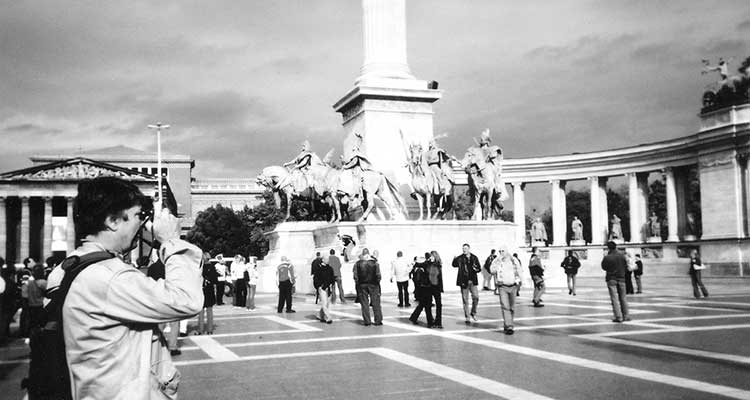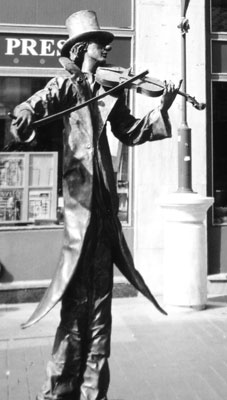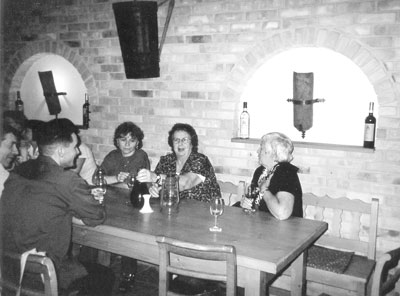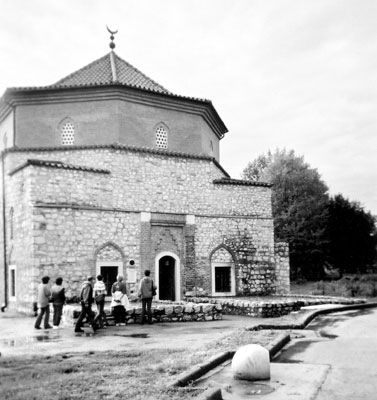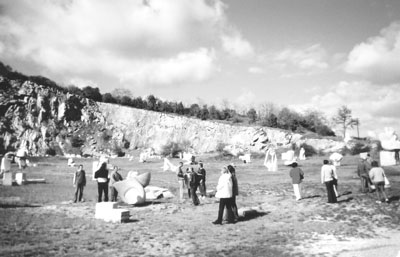Hungary coddles visitors with spas, spice and wine
by Chloe Ryan Winston, Redding, CA
Bright strings of paprika hanging against the darkened interiors of small shops in countryside villages and towns; warming water rising as steam from hundreds of spas; ancient palaces and ornate churches decorating gentle slopes, and cornstalks, although not as high as an elephant’s eye, growing thickly on level fields reminding one of America’s Midwest: all this, plus tempting wine cellars, can be found in Hungary, a Central European country now being “discovered” by experienced travelers.
A new Hungary
Much more comes to mind when one hears the name Hungary: Austro-Hungarian Empire, Herend® porcelain, gypsies, Huns who swept across the plains, and goulash. For me, it is 1956, the year Russian tanks crashed into Budapest and other Hungarian towns to crush a rising rebellion against Communism.
However, those old images can crawl back into distant memory because modern Hungary’s 10 million people have shed the past and look eagerly to a future which includes membership, as of this year, in the European Union.
Hungarians hope their future shows a dramatic increase in tourism along with financial benefits flowing from the E.U. — although they may find that intransigent wine makers in France may protect their own major investments in vineyards and wineries to the detriment of Hungary’s.
Great time to visit
Most American travelers arrive in Hungary through Munich’s smashing new terminal addition or through the Frankfurt airport. On the approach to the airport in Budapest, passengers can see the snake-like, lazy river below, the Danube — not blue as in the song, more like pewter, but still a big powerhouse for trade and travel.
As the growing number of visitors are aware, outside of Budapest and its Hilton-Marriott-InterContinental-Sofitel cluster, smart restaurants, glorious architectural treats and, thankfully, English-speaking, credit card-accepting salespeople, there is some work to be done to make travel there completely comfortable.
But for the traveler who wants to get there “before the mobs,” today is absolutely a wonderful time to explore this friendly place which offers stunning scenery, delicious wines, ache-relieving thermal baths, sweet or hot paprika and great shopping.
Thermal waters spout from every part of Hungary, thanks, according to legend, to the devil’s raking the land, releasing sulfur into the water. Whatever the cause, spas of varying size and curative brag are found conveniently everywhere the wine flows!
Wine, relaxation and shopping
Every two years the town of Villany, about three hours from Budapest, celebrates the end of the grape harvest and the making of wine by holding the Red October Wine Festival, most recently in 2003. And Villany is only one of several major wine-producing areas.
Harkány, which is in the same Transdanubian region as Villany, is a major spa center, offering numerous hotels, restaurants and shops.
But be warned: since most tourists to Harkány are Germans, Croatians and Austrians, little English is spoken by service providers. That will soon change.
For now, small calculators solve the language problems when shopping, since numbers are language resistant, and hand gestures accomplish most communication (except when one needs a rest room!).
Everything from Herend® and Zsolnay porcelain to unusual embroidered linens tempts even the most sophisticated shopper, particularly in Budapest and other major cities, although smaller locations offer their own special finds.
Budapest
What most of us know about Hungary involves Budapest, the capital and a UNESCO World Heritage Site.
It has one of the oldest metro systems in Europe — fast, clean and cheap — and you’ll need it because the biggest problem is what to see: a 2,000-year-old Roman amphitheater, hundreds of museums, concert halls, opera houses. . . So little time, so much to see.
Heroes’ Square, which reminds me of similar squares in Mexico City and Rome, contains an obelisk surrounded by giant statues of horses bearing the leaders of the seven Magyar tribes who settled the country.
Castle Hill contains the most must-see sites in this city.
According to novelist Peter King in his new thriller, “Dine and Die on the Danube Express,” the Parliament buildings in Budapest are the most beautiful in the world. You need to see for yourself if he’s right.
A major synagogue, the largest in Europe, can be found in Budapest, and explorable caves, storybook palaces and one of the largest health spas in Europe are here also.
Outside the city
But there is much more to see and experience outside of the capital. The next three cities, in size, are Debrecen, noted for its Calvinist history; Miskolc, an archaeological and theatrical center, and Szeged, the major paprika producer of the nation. (Szeged is also near the Villany-Siklos Wine Road, a destination in itself.)
Hungary abounds with history and all the paraphernalia that goes with it — massive churches, hundreds of years old; ornate palaces of ancient, powerful royalty, and large museums filled with treasures saved from marauding hordes who swept across the plains each time the itch to conquer someone became too much. It’s hard to take it all in.
The first thing to do is get into the countryside. The second is to be certain of lodging; you won’t find an abundance of offerings outside of major cities.
I spent two weeks in Hódmezovásárhely, a town of nearly 50,000 people, and found only two very small hotels. “Hod” is noted for its distinctive blue-and-white pottery and linens embroidered with painted wool, found nowhere else in Hungary.
Color, vibrant and sensual, forms an important part of Hungarian life, be it in traditional clothing, painted houses or church interiors. Szeged has a wonderfully attractive university, with its arcades highlighted by handsome busts of famous Hungarian writers, poets, musicians and other notables. A major cathedral is set within the embrace of the university’s wings.
Food and wine
Still to mention are strudel, crepes, dumplings, cream puffs and even goulash, that delicious soup/stew spiced with paprika. Hungarians really can cook, and entrées go far beyond goulash. (Before diving in, dip gently to check the “heat” of the paprika.)
You may want to be aware that lard is used everywhere as a butter substitute, big slabs of it. Called “bacon” by some, it’s still lard.
The list goes on. The most unusual, to us, were the frequent side dishes. One was piled high with tiny sliced, vinegared cucumbers with a dot of sour cream on top. Other times, the small plate contained six dill pickles sliced the long way. (I love dill pickles and even eat pickle sandwiches, but those little salads of pickles were more than I could finish.)
Hungarians are particularly proud of their wines, especially sweet Tokay, merlot, port and a variety of white wines.
Warning: stairs will take care of the calories, but if you have a problem walking or climbing, check in advance the ease of getting around the places you wish to visit.
But when you are tired and your feet need a rest, Szeged is the place to hasten to relax. Sit in the major square with its two intriguing statues and watch with mouthwatering amazement the ice cream creations carried past you by quick waiters.
Then you’ll need to “walk off” the treat you couldn’t resist!
Something for everyone
Music lovers will find an auditory home in Hungary, with styles ranging from opera to gypsy tunes. Artists, architects, historians, theater haunters, gourmands and archaeologists all will find something exciting, even if they wish to just sit on a hillside in an open meadow and look out over the Hungarian plain stretched before them. That plain, once ravaged by unwelcome invaders, now awaits a more gentle invasion — one with dollars, not scimitars.
Helpful guide
For more information, contact the Hungarian National Tourist Office (150 E. 58th St., 33rd Fl., New York, NY 10155; phone 212/355-0240 or visit www.hungarytourism.hu) and ask for “Hungary, Step by Step.” It’s a very comprehensive, picture-filled, informative magazine covering every region of Hungary and most towns and cities, but it’s expensive to produce, so don’t request it unless you are really serious about traveling there.

